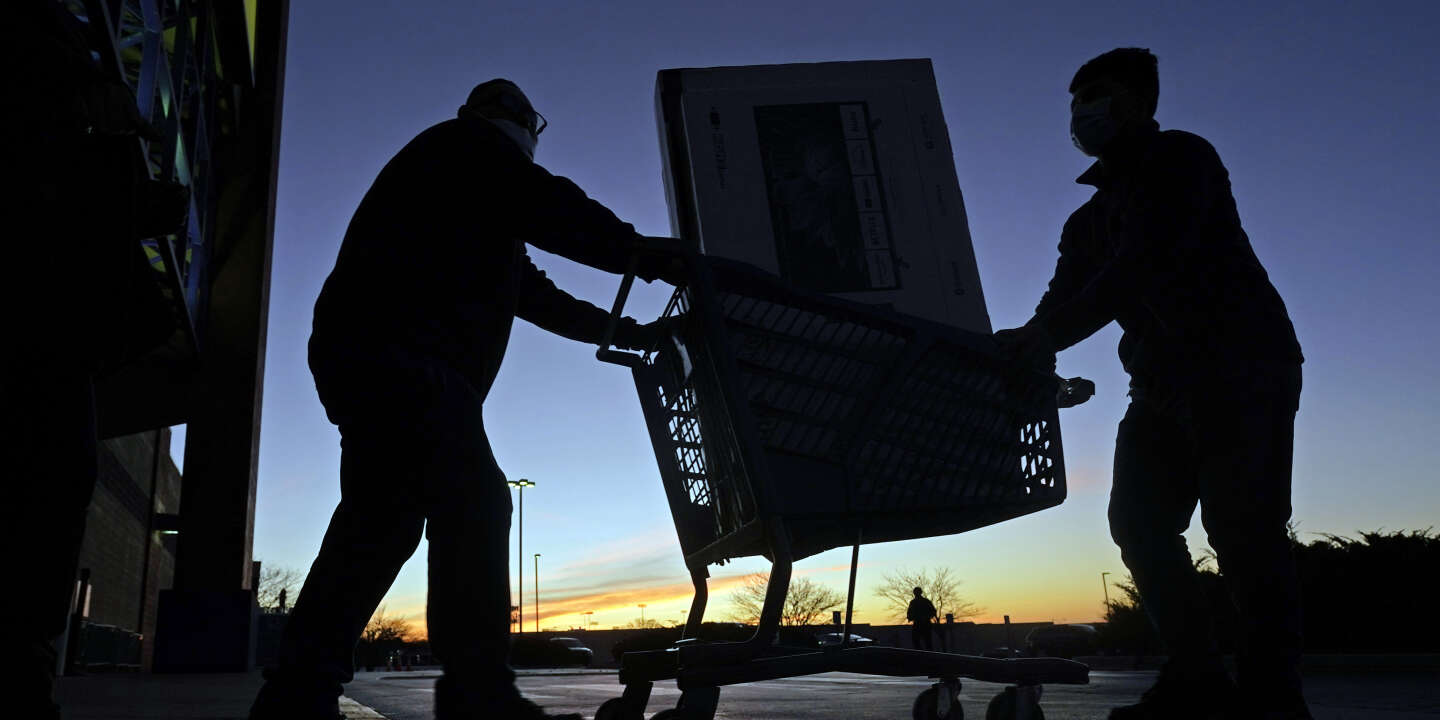Unheard of since June 1982, under the presidency of Ronald Reagan, when Paul Volcker, at the head of the Fed, tried to bring down inflation after the two oil shocks of 1973 and 1979: the rise in prices in the United States. United grew by 6.8% over one year in November, up sharply compared to the previous month (6.2%). Above all, inflation is now generalized on the North American continent, since the index excluding energy and food rose 4.9% (against 4.4% a month earlier). Energy prices, they jumped over a year by a third and food by 6.1%, according to figures released Friday, December 10 by the Ministry of Labor.
So it’s been seven months since May that US inflation has exceeded 5%. Joe Biden and Fed Chairman Jerome Powell got the wrong economic diagnosis, the first pushing for a major and off-beat economic stimulus package in March when the economy was already rebounding, the second ensuring that the price increases would be “transient”, a term he recently rejected. As a result, real wages have been falling for two months (0.6 in October, 0.4 in November). In fact, their nominal annual increase (4.8%) is nearly two points lower than the price increase.
Break the locks
Inflation is a complex mixture: it is due in part to a supply shock, caused by bottlenecks due to Covid-19 and “de-globalization”: shortage of semiconductors, which paralyzes the automobile ; boom in building materials for Americans who want to live in single-family homes; blocking of ports in the United States and China; labor shortage, due to the “great resignation” of Americans, who left the labor market and live on the savings reserves accumulated during the Covid. This inflation can also be explained by a demand shock, with Americans having massively reallocated their spending, buying goods rather than services.
There is now a consensus on this observation, and the challenge is to resolve the causes of inflation. First initiative, breaking down the barriers: on the logistics side, the American ports have increased their rates; President Biden unblocked strategic oil reserves and accused oil producers of cartelization; the planet is working hard to build new semiconductor factories; Federal unemployment assistance has been interrupted since September and should encourage Americans to return to work more quickly, especially as the government is doing everything to ensure that schools, largely closed the first two years of the pandemic, keep open doors. All these data contribute to the rosy scenario, that of an inflation which should return to its bed in the second half of 2022. They are corroborated by the first information on the Omicron variant, whose low lethality does not augur a new blockage – inflationary – hotspots of the economy.
You have 43.64% of this article to read. The rest is for subscribers only.
–


